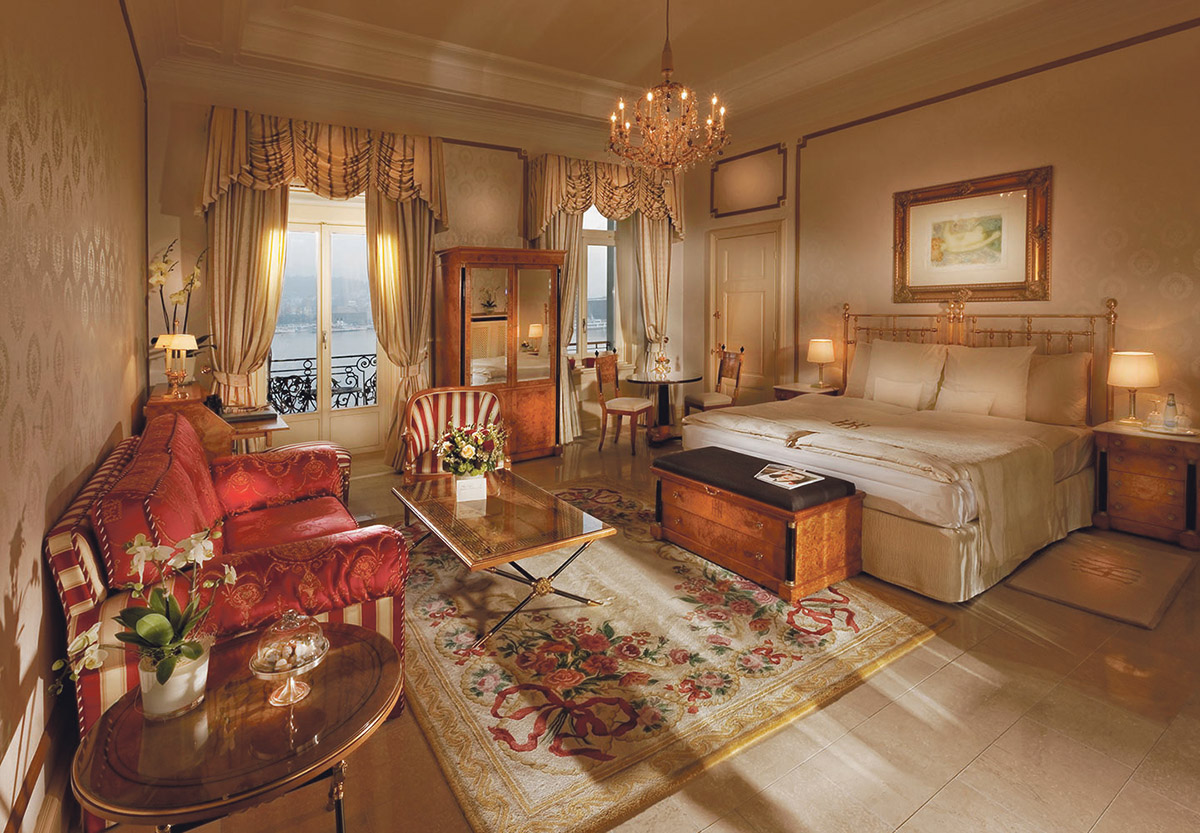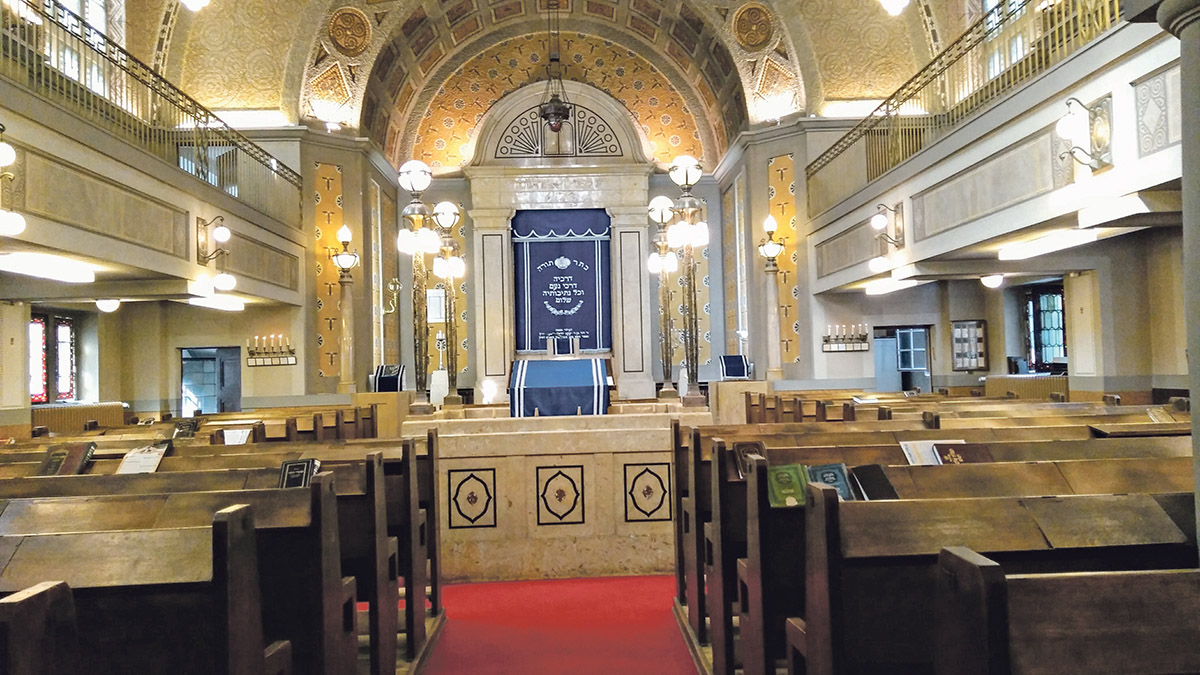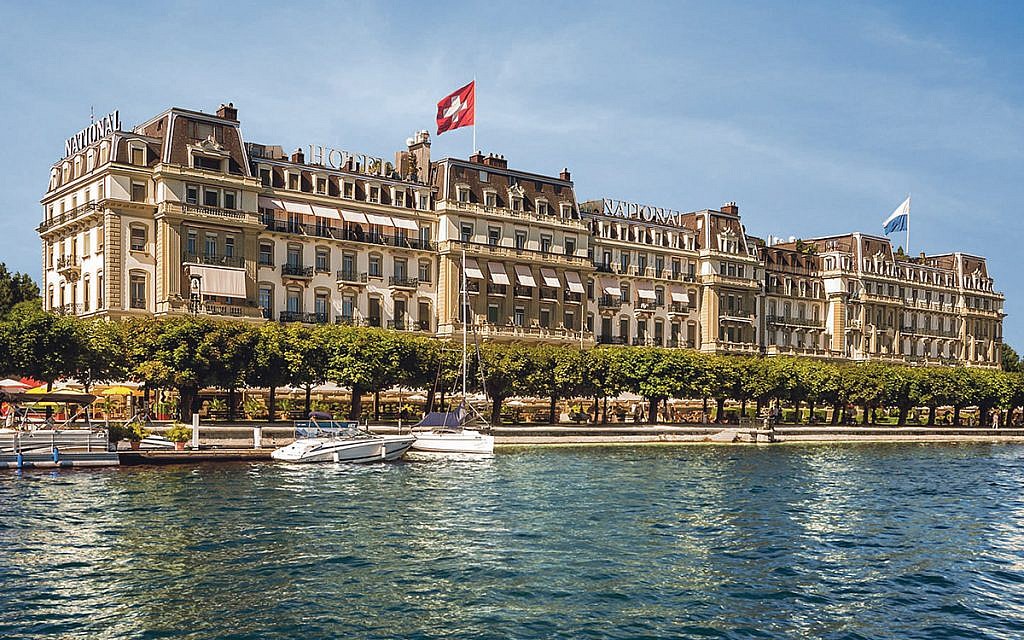Swiss you already!
Lucy Daltroff explores Lucerne’s links to William Turner, while enjoying this historic city encircled by stunning lakes and mountains
“Lucerne?” said the man from Zurich sitting next to me on the plane. “Certainly the most beautiful city in Switzerland,” he assured me, based on its abundant culture, history and of course, stunning scenery.
An hour later, his view became reality. Just by walking out of the grand station, visitors can see the splendour of a clean turquoise lake, a historic wooden bridge, the tower of an old church, and all encircled by glistening mountains.
William Turner, arguably the world’s best watercolourist, thought so too. He visited Switzerland six times between 1841 and 1844 and set many of his landscapes here, loving the local interplay of light and weather conditions.
Get The Jewish News Daily Edition by email and never miss our top stories Free Sign Up
To honour Turner’s importance, not only to Lucerne but to Switzerland as a whole, 100 of his works have gone on display until 13 October at the famous Kunstmuseum, which is also, coincidentally, celebrating its 200th birthday this year.
“The region owes a lot to Turner for putting Switzerland on the map,” curator Fanni Fetzer tells me. “He made what was then a very poor country suddenly more prosperous.”
Turner certainly led the way to a change in attitude. The Alps were no longer just an impediment on the way to Italy and the south, but a destination in themselves, with British tourists among the first to enjoy hiking in the mountains in this part
of German-speaking central Switzerland.
Even Queen Victoria came to take her holidays here while grieving for Albert. She stayed at least four weeks in Lucerne, finding solace in the lakes and mountains.
A strong contender for the best place to stay today is the 5-star Grand Hotel-National, perched by the side of the water. Its heritage speaks for itself; the founder was César Ritz, famous around the world as a synonym for premier hospitality and he was later joined by Auguste Escoffier, the originator of Grande Cuisine.

The 41 bedrooms are elegant, the service second to none, and the outside terrace a good place to drink in the stunning views over the lake.
Lucerne is a compact city, although it does extend over both sides of the River Reuss, linked by the diagonal Kapellbrücke built in 1365 as part of Lucerne’s fortifications and the oldest wooden covered bridge in Europe. There is a thrill in walking through its entire 672ft span and viewing the interior paintings, which date back to the 17th century.
Another popular attraction is the portrayal of a mortally wounded lion commemorating the Swiss guards of Louis XVI, who were massacred in 1792 during the French Revolution and also gives a nod to mercenary soldiers who had an impact on the economic development of Switzerland.
The facial expression of the dying lion is exquisitely poignant. Mark Twain famously described it “as the saddest and most moving piece of rock in the world”.
Not far from the centre of town is the synagogue founded in 1912 in what was then the Jewish district of the city. The three-storey building is opulent and well-kept and there are even two flats available for visitors from overseas. In 2016, a small yeshiva was set up here and students from Israel and other parts of Europe assure there is daily minyan.

A wonderful outing from the city is to take one of the nostalgic paddle steamers that cross the lake to Vitznau and then board the cogwheel railway, completed in 1871, that runs nearly to the top of Mount Rigi.
There are a number of stops on the way up, small communities whose only link is this small train. The Panorama from the top has to be one of the best Alpine experiences, with Lake Lucerne in the foreground, as well as Lake Zug and Lake Lauerz, and horizons stretching as far the Eigar and the Jungfray.
Interestingly, a Turner enthusiast tells me that although the artist sketched and painted the Riga Mountain at many different times of the day, he thought it unnecessary to actually ascend the mountain himself.
It obviously paid off, as his famous watercolour, Blue Rigi, is currently valued at more than £6million!
Elsewhere, a fabulous private gallery in Lucerne, called the Rosengart Collection, comprises works acquired by Jewish art dealer Siegfried Rosengart and his daughter Angela, who befriended many artists of the time.
In 1992, Angela set up the Rosengart Foundation to maintain the collection and make it accessible to the public on a permanent basis.
The fabulous paintings include Paul Klee, Cézanne, Chagall and Matisse, although Picasso features the most. Angela met Picasso when she was just 17 and he painted
her five times. She also met Braque, Chagall, Miro and Matisse.
She never lends out any of these pictures and they can only be viewed here. Apart from the magnificent pictures in the collection, also on display is a beautiful artist’s palette.
Angela, now an elegant lady in her eighties, tells me that Chagall was musing whether one of his paintings was finished or not, and asked her father’s opinion.
Siegfried replied that it was perfect as it was – and continuing might not be a good idea.
Apparently Chagall was so pleased with this advice that he signed his palette there and then and presented it to his friend.
Lucy’s Travel Tips
Lucy stayed at Grand Hotel-National (www.grandhotel-national.com), where rates start from £392 per night for a double room. She flew with Swiss International Airlines (www.swiss.com/ch/en), direct from London to Zurich. For more information about Lucerne’s Jewish community, visit http://jgluzern.ch and for details about visiting Switzerland, see www.MySwitzerland.com

Thank you for helping to make Jewish News the leading source of news and opinion for the UK Jewish community. Today we're asking for your invaluable help to continue putting our community first in everything we do.
For as little as £5 a month you can help sustain the vital work we do in celebrating and standing up for Jewish life in Britain.
Jewish News holds our community together and keeps us connected. Like a synagogue, it’s where people turn to feel part of something bigger. It also proudly shows the rest of Britain the vibrancy and rich culture of modern Jewish life.
You can make a quick and easy one-off or monthly contribution of £5, £10, £20 or any other sum you’re comfortable with.
100% of your donation will help us continue celebrating our community, in all its dynamic diversity...
Engaging
Being a community platform means so much more than producing a newspaper and website. One of our proudest roles is media partnering with our invaluable charities to amplify the outstanding work they do to help us all.
Celebrating
There’s no shortage of oys in the world but Jewish News takes every opportunity to celebrate the joys too, through projects like Night of Heroes, 40 Under 40 and other compelling countdowns that make the community kvell with pride.
Pioneering
In the first collaboration between media outlets from different faiths, Jewish News worked with British Muslim TV and Church Times to produce a list of young activists leading the way on interfaith understanding.
Campaigning
Royal Mail issued a stamp honouring Holocaust hero Sir Nicholas Winton after a Jewish News campaign attracted more than 100,000 backers. Jewish Newsalso produces special editions of the paper highlighting pressing issues including mental health and Holocaust remembrance.
Easy access
In an age when news is readily accessible, Jewish News provides high-quality content free online and offline, removing any financial barriers to connecting people.
Voice of our community to wider society
The Jewish News team regularly appears on TV, radio and on the pages of the national press to comment on stories about the Jewish community. Easy access to the paper on the streets of London also means Jewish News provides an invaluable window into the community for the country at large.
We hope you agree all this is worth preserving.
-
By Laurent Vaughan - Senior Associate (Bishop & Sewell Solicitors)
-
By Laurent Vaughan - Senior Associate (Bishop & Sewell Solicitors)
-
By Laurent Vaughan - Senior Associate (Bishop & Sewell Solicitors)
-
By Laurent Vaughan - Senior Associate (Bishop & Sewell Solicitors)






















